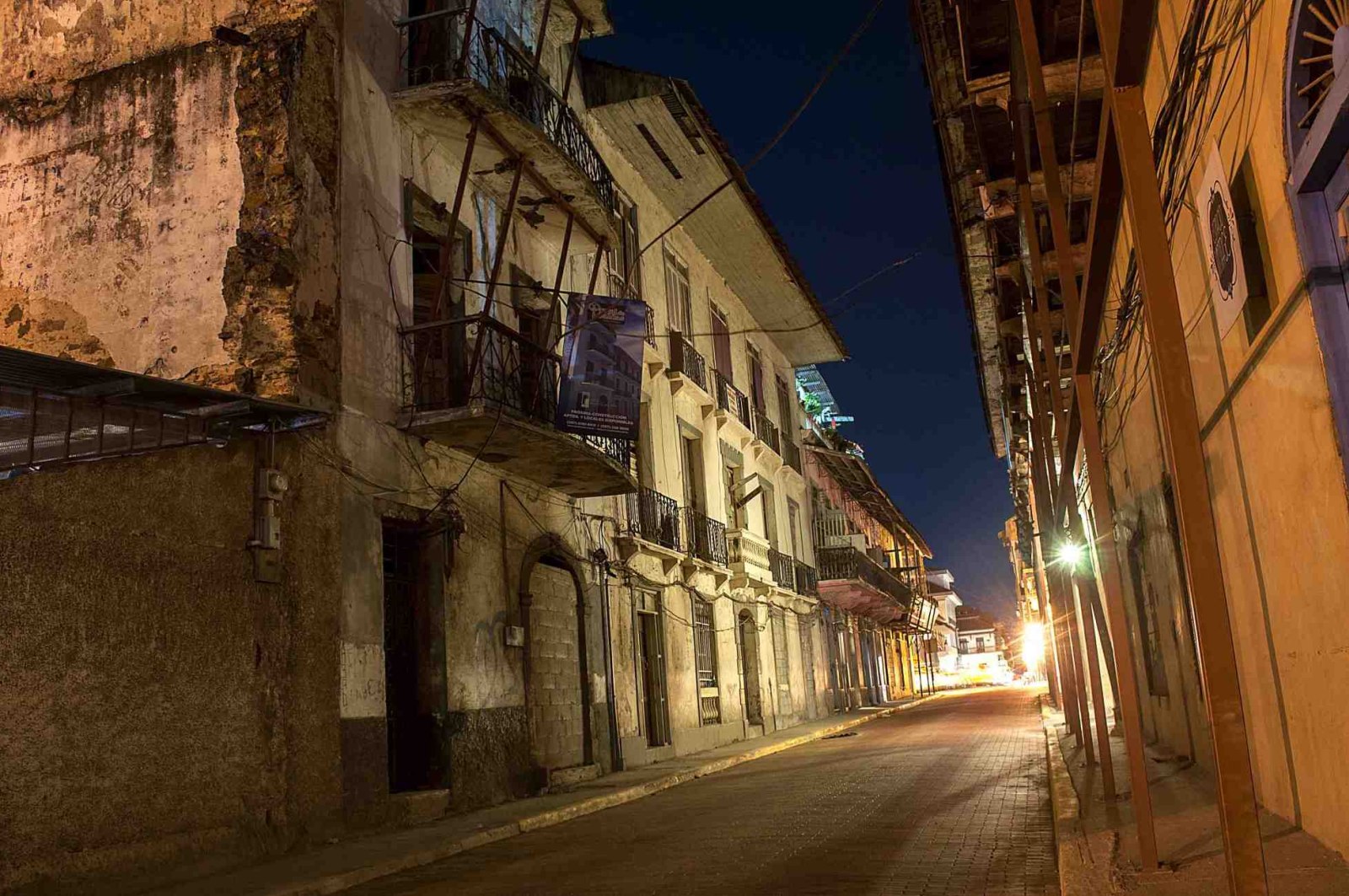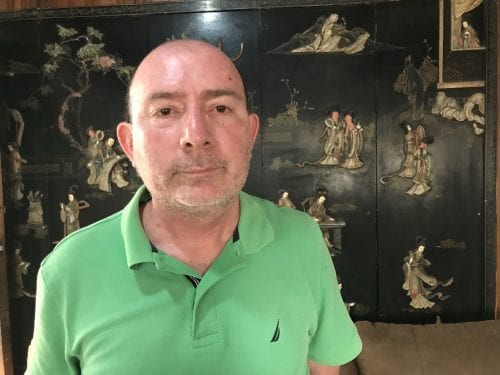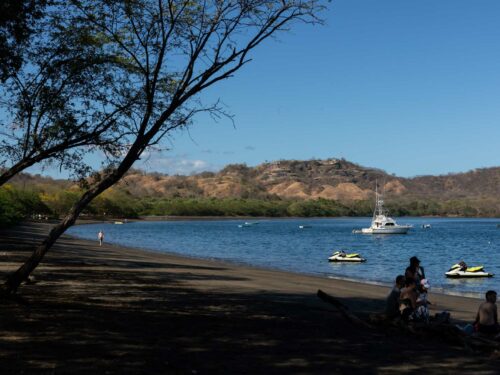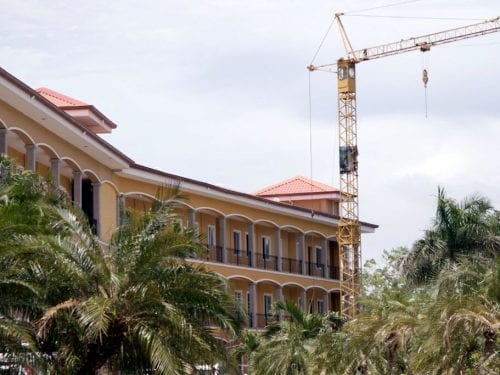
For those looking to make a short trip out of Costa Rica that isn’t Nicaragua, the photojournalist Leo Umana presents the beautiful city of Panamá.
Within Central America we find the beautiful city of Panamá, an area of a wide variety of landscapes with a huge tourist and business center.
The downtown, the nerve center of the whole country, is a space dedicated mostly to large international trade, services and tourism, also having all the advantages of a big city.
Transportation is easy and cheap and will grow with the opening of the metro, a project started in February 2011 that is expected to open in 2017. The bus service, with all new and well air-conditioned buses, runs throughout the city dropping off the old, and famous “Red Devils” (Diablos Rojos), with their colorful lights and flashy graffiti, are the buses in certain areas of the city, but mostly serve as “mobile bars” for those who want to enjoy a holiday touring the city to the rhythm of reggaeton.
Renting a car to explore the city is not recommended because, although the roads are in excellent condition and allow access to almost all parts of the city, work on the metro creates traffic chaos.
For those looking for a gastronomic journey, the enormous range of dining options includes fine dining with steaks and seafood of the highest quality, as well as smaller restaurants offering traditional dishes such as stew and typical Panamanian meals, to street food where they sell roasted meats, cassava empanadas stuffed with meat, or tempting fried food with a base of cassava, corn or cooked banana.
Like every good city, Panamá has a great night life for partiers and those willing to “rumbear” (dance/party). Some popular sites are the iconic Hard Rock Café, the clubs above the Cosway or bars at the wonderful Casco Viejo (Old Town).
Abundant hotels range from the more demure and comfortable dormitories for backpackers which cost $10 a night in low season, to the renowned history and pleasure of the Waldorf Astoria, offering promotions from $100 per night in the low season as well. The Astoria is at the heart of the city and has a “skyscraper” structural type that is part of the skyline; a similar construction style has become increasingly used for housing towers, where buildings are constructed in a city which dreams of the movement and dynamic of the world’s largest cities.
On the other hand, the public spaces, recently reclaimed by by the city, have had significant improvements in recent years, with parks being transformed into places for meetings and exercise. An example is the park near Vía Argentina, where new urban gyms allow free exercise. Also the newer “coastal strip,” though criticized for its construction as it took several meters off the sea and changed the traditional view of the tourist area, offers an environment conducive to exercise and walk, with excellent security and tranquility, with wonderful views of the sea.
It should always be remembered that as in Central American countries, in this city there is a huge contradiction which is characteristic of high economic growth areas, marked by a growing social divide, where affluent areas maintain not only high-quality infrastructure, but also the large part of capital, while in many cases, people of limited means lack even the most basic necessities.
A clear example is the Casco Viejo, the historic center and the first Spanish settlement, which was destroyed and re-founded in 1673. Starting in 1800, it received an enormous contribution from the French, who came to the city to work in what was the first stage of the famous canal and greatly contributed to the architectural style of the site.
In 1997, the Casco Viejo was included in the UNESCO’s list of World Heritage sites. It is surrounded by rocky reefs and filled with colonial buildings, but one notices, for better or worse, the state’s intervention, which has been dedicated to rescuing the most emblematic buildings and offering private intervention for others, leaving out its older and less affluent inhabitants.
To walk the cobblestone streets is to feel the air of the coast and soak in the days when pirates like Morgan raged in all the coastal cities of the new world. Every little nook offers ancient materials and a characteristic architecture marked by uneven growth and the contribution of a population attached to their homes and their beautiful neighborhoods, the defenses of war, arches and squares.
It is in the Casco Viejo where “Don Carlos” lives, an old baseball player and community leader who is supporting organizations to prevent the poor population from leaving the Casco. His phrase “Panamá for Panamanians” represents the feelings of those people who feel that these areas are being sold to foreigners with high purchasing power at the expense of the native population.
It is also important to remember to visit the wonderful Cosway de Amador, built with the material removed during the excavation of the canal, which connects four islands called Naos, Culebra, Perico and Flamingo, belonging to Panamá Bay (la Bahía de Panamá). It is an excellent place for walks, skating or bike rentals, or an interesting pedal cart for two or four people. From there, you have a magnificent view of the ferries to the canal and other small vessels responsible for giving rides to those who, beginning with the sea, want to see the corners of this particular capital.
So, get used to service that is not of high quality and will bring an occasional headache in dealing with staff. However, Panamá offers the enjoyment of high comfort and reasonable prices where you can find everything that a modern city has to offer.







Comments